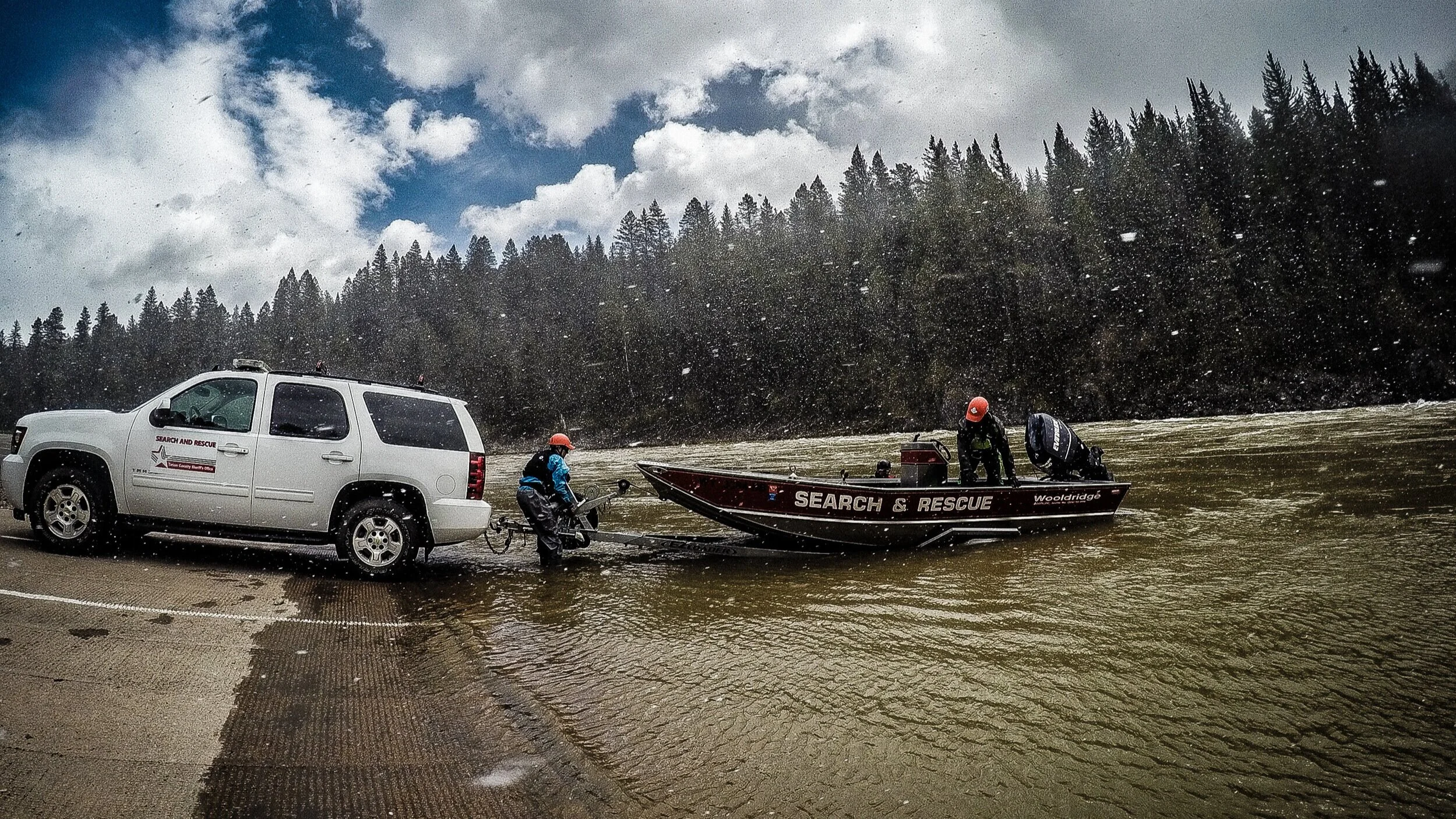This story is being republished from its original release date of May 27, 2020, with updated info and new photos.
Let’s say you are backpacking in the middle of the Gros Ventre Wilderness, or deep within a remote canyon in the Jed Smith. Somehow, you unfortunately break your leg. Without having cellular service and being very far from help, what do you do?
TCSAR volunteer Lexie Drechsel uses Lifeseeker during a training on May 24, 2022, to find a cellular device where no cellular service exists.
If you can, send someone for help and hunker down as best as possible. But even then, that leaves many questions about the outcome of your potential rescue: How long can you last due to exposure? What about weather, wildlife, and the seriousness of your injury?
These situations, though rare, occur when someone becomes stranded, lost, or incapacitated in a wilderness environment, leading to extended rescues involving dozens if not hundreds of people searching for clues of your whereabouts.
But thanks to one of the more unique tools within the Teton County Search & Rescue toolkit, you might be found in a much quicker fashion. Known as Lifeseeker, this aircraft-mounted cellular transmitter enables a helicopter search team to locate you based on the pings in the cellular network—even when there is no cellular service.
“Lifeseeker is another tool in toolbox and I think it’s amazing that TCSAR has access to this technology,” says TCSAR volunteer Lexie Drechsel, who joined the team in 2021. “I feel very fortunate to have been able to be part of multiple trainings this spring, running several iterations with Lifeseeker. In the case of a missing/injured party of unknown location, it’s a huge asset that we have multiple team members trained and prepared to operate the technology smoothly.”
When activated, Lifeseeker effectively acts as an airborne cellular transmitter, allowing a helicopter search team to pick up and locate specific numbers coming off your phone. When your phone is powered on and not in airplane mode, it constantly sends out a unique IMEI number (think of it as a digital fingerprint) to connect with the nearest cell tower. If the SAR team knows that IMEI number, they can hone in on its exact location as the number is transmitted through Lifeseeker. When Lifeseeker picks up on the IMEI, the location is displayed on a pair of iPads connected to a primary controller box. Both rescuer and pilot have iPads so they each both see the location of the device.
TCSAR pilot Steve Wilson hones in on a lost subject using Lifeseeker during a training on May 24, 2022.
In other words, when Lifeseeker passes overhead inside the TCSAR helicopter, it acts as a temporary service provider, connecting your phone to the team inside.
“Once we have a confirmed location, we can send a text message to that device, and, if able, someone can text back,” says TCSAR team member Eric Helgoth, a volunteer since 2004. “However, if we fly over looking for phone X, and phone Y sees they have a cell signal, phone Y can’t use that signal.”
Nor does TCSAR have the ability (and, it should be noted, the desire) to block or interfere with anyone’s cellular service. Lifeseeker is simply a rescue aid. Designed by a Spanish firm, Centim, this is the first such device in use in the U.S. TCSAR obtained it through an anonymous donor.
“We’ve got a dozen different ways to find someone,” Helgoth says. “It’s just one more tool in our toolbox. It’s not going to work in every instance.”
Turn it up to 11. And if you’re lost, keep your phone charged up and on so Lifeseeker can find you.
For example, Lifeseeker won’t find you if your phone is turned off or in airplane mode. It is only able to receive and transmit phones that are actively seeking a cell tower. So it’s a good idea to bring a backup power source, and make your phone active if you know you’re being sought by Search & Rescue. Goal Zero makes some great power banks for rugged outdoor use, as does Outdoor Tech.
TCSAR has a range of options to do helicopter searches depending on the rescue scenario. One is the RECCO SAR Helicopter Detector, a 174-pound drum that hangs 15 meters (about 49 feet) below the helicopter. Flying 300 feet above the ground at 60 mph, the detector scans 600 square feet every second. The team also has a heli avalanche beacon, which picks up signals from buried avalanche transceivers.
Another useful took from TCSAR is Backcountry SOS, a free app that allows a user to text an emergency directly to 911 in Teton County. The app is now available in 12 counties across the West, and has been used to save lives in Jackson Hole.




